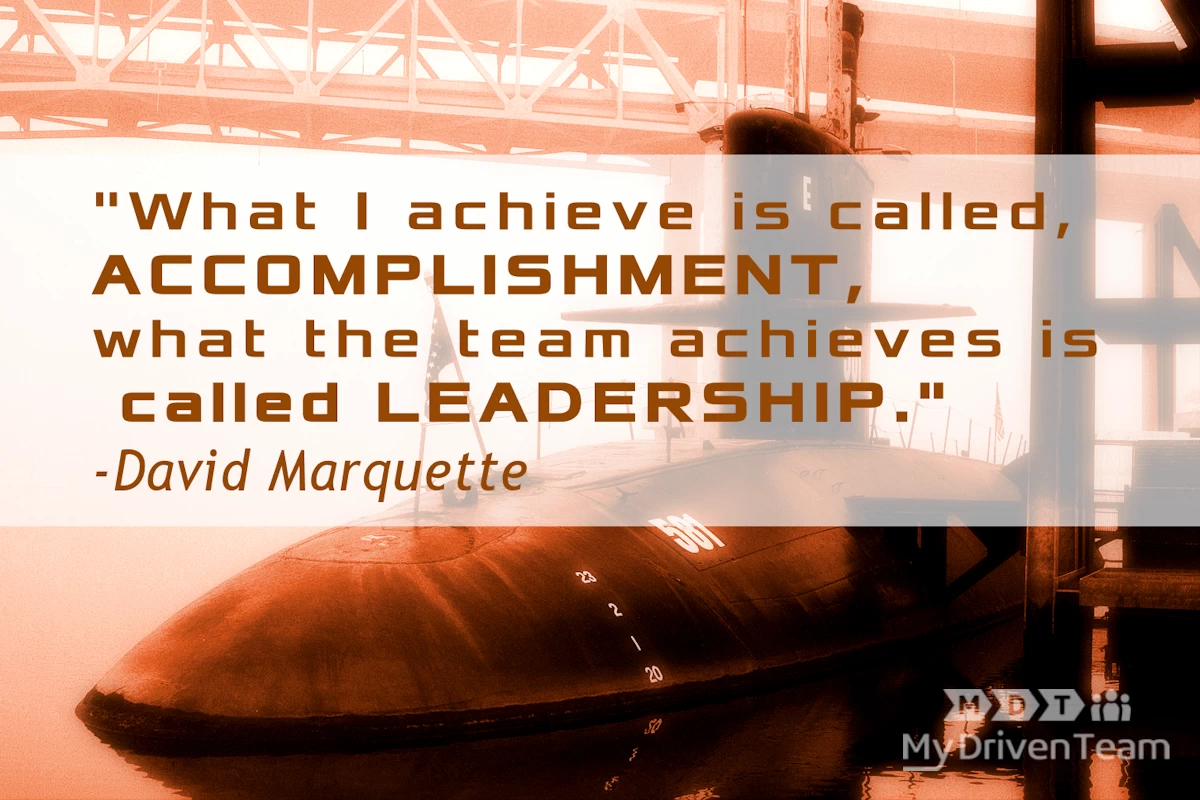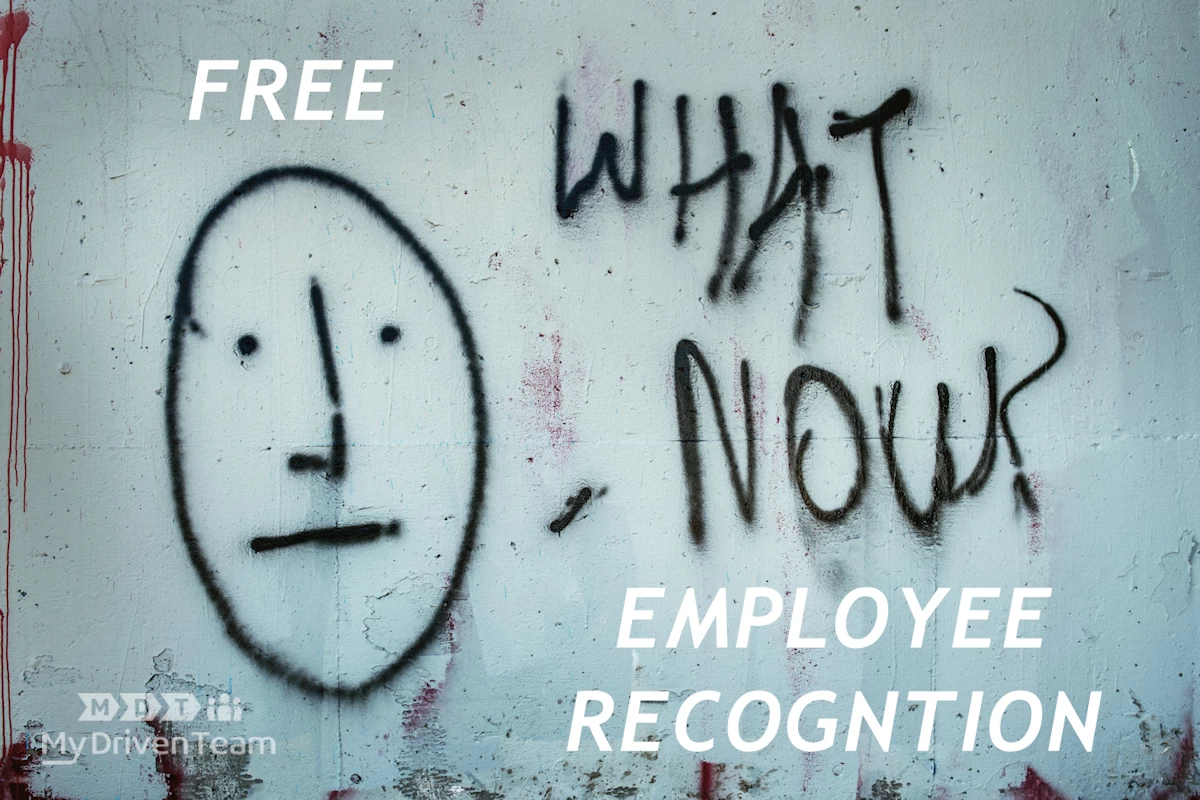
Though at this point, I would consider this an oldie, but a goodie (from 2014). That said, I recently re-watched it for the first time since COVID to see if I could reset my brain and maybe even pick up some new pointers. Sure enough, I remembered why I was originally awestruck and why I believe most teams miss the point.
While I highly recommend you watch the video for the great delivery and captivating story-telling, I went ahead and made a highlight reel for anyone who doesn’t have the 10 minutes to watch.
Turn The Ship Around Summarized:
- Followers are taught to listen to order and do; even at their own peril
- Leaders are taught to take control and give orders
- Instead, never give another order – give intent
- Let them discover the answer; stop being the “answer man”
- Give control…what’s needed to give control:
- Technical competence – do you have this? How do you know?
- Organizational clarity – do you have this? How do you know?
- Move the authority where the information is
- Create an environment for thinking; think like the CEO is right there with them!
- Give control and create leaders!!!
Why Do Most Teams Miss It?
Hopefully, you noticed that I underline two sets of questions above. These are the two areas that David Marquet takes for granted in his story (and are so critical to success):
Technical Competence:
Let’s first say that technical knowledge and technical competence are separate things. While technical knowledge means that you understand the specifications of a component, process, or task; technical competence means you can perform those tasks. This is subtle, but extremely important.
This is the difference between going to college to get a degree in finance and being a CFO at a professionally ran organization. One says I can do it, the other says, I am doing it.
Fortunately, for Marquet, the US Military is serious about it’s training! Therefor, it’s highly unlikely that someone would be in a position to have no training.
However, many organizations promote people to the point where they don’t know what they are doing:
“We promote our people to their highest level of incompetence”
Said many front-line workers about the Boss
Does this mean that you can only hire someone with experience and those that don’t have it are doomed to failure? Of course not! Instead, what it means is that many times we stop training people way too early and leave them to float along without proper guidance.
This is why I recommend using the TWI approach from the Department of War (1942):
- Prepare the learner. Make sure they are in the right mental state to learn.
- Present the operation. Show them how to do it slowly and explain to them why.
- Try out performance. Stay with them while they do it safely before going solo.
- Follow up. Don’t set it and forget it; ask them how they are doing and coach until they are ready.
*Italics are my own interpretation of the original intent
Here’s a classic video example from 1944:
Why am I referring to a video from 1944 for training? Haven’t we come a long way since then? Honestly, I’m not sure. My personal experience has been that many teams don’t take the time to train properly. We live in such a fast-paced, short-snippet world, that we expect people to learn quickly and without issue. This isn’t reality!
I’d also like to take a moment and acknowledge the work that was done back in the 40′ on this topic. The original Department of War created TWI out of necessity. The US needed to support a difficult war by sending over our highly skilled Industrial workers, replacing them with unskilled housewives (who were very skilled at household tasks of course).
In addition to this, we were literally flipping our manufacturing environments from making refrigerator parts to making airplane propellers. Our current teams are ready to throw in the towel when we switch from Google to Microsoft. Can you even imagine what it took to change all of your processes and all of your people while trying to supply parts the people’s lives depended on?
This was an incredible time and worth learning from. It’s why the Japanese later took these lessons and applied them to their own manufacturing environments to eventually outpace us in Safety, Quality, and Cost.
All of that said, how do you know if someone has technical competence? This is where you need organizational clarity. I’ll go into that below…
Organizational Clarity
Here again, this is something that the US Military has figured it out very well. Roles are well defined. Tasks and procedures are documented and people are trained to and held accountable to them. While this may not sound like fun, it can be a huge advantage!
Many leaders approach their team as the Wild West. That means they need cowboys in order to win. Cowboys don’t come easy and are often unpredictable. If you are looking for a team that wins consistently, you need that Cowboy creativity AND stability.
So, how do you get there?
Start by asking if your team roles are well defined. If the answer is yes, then take it another step and ask these questions:
- Is it written down somewhere?
- Does anyone on your team no where to find it?
- Do they follow it?
Once you get through that, then ask yourself if your team knows what good looks like (Not just for results but for process steps as well). Similar questions apply:
- Is it written down somewhere?
- Does anyone on your team no where to find it?
- Do they follow it?
Lastly, is it visual? I know I asked that question above, but I’m serious about this. What winning team do you know of that doesn’t have a scoreboard of some kind? There are many different ways to accomplish this, but the simpler and more obvious you can make it clear to a team when they are winning or losing, the better off you are!
Closing Thoughts
I realize that this article stays pretty high level and lacks a lot of detail it takes to get things done. However, it doesn’t need to be complex or even that precise at first. Take the first steps and be persistent. Keep improving and you will see results!!
As always, feel free to email me with any questions…good luck and may God Bless your efforts!



